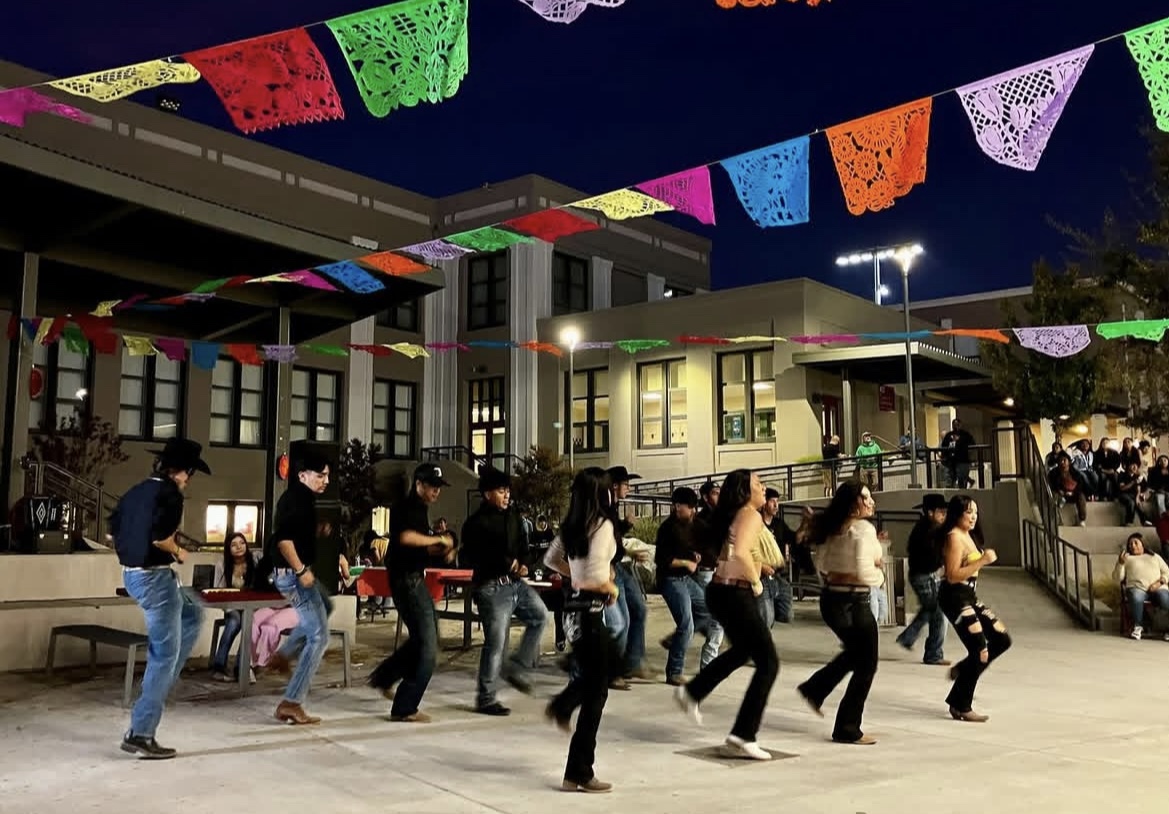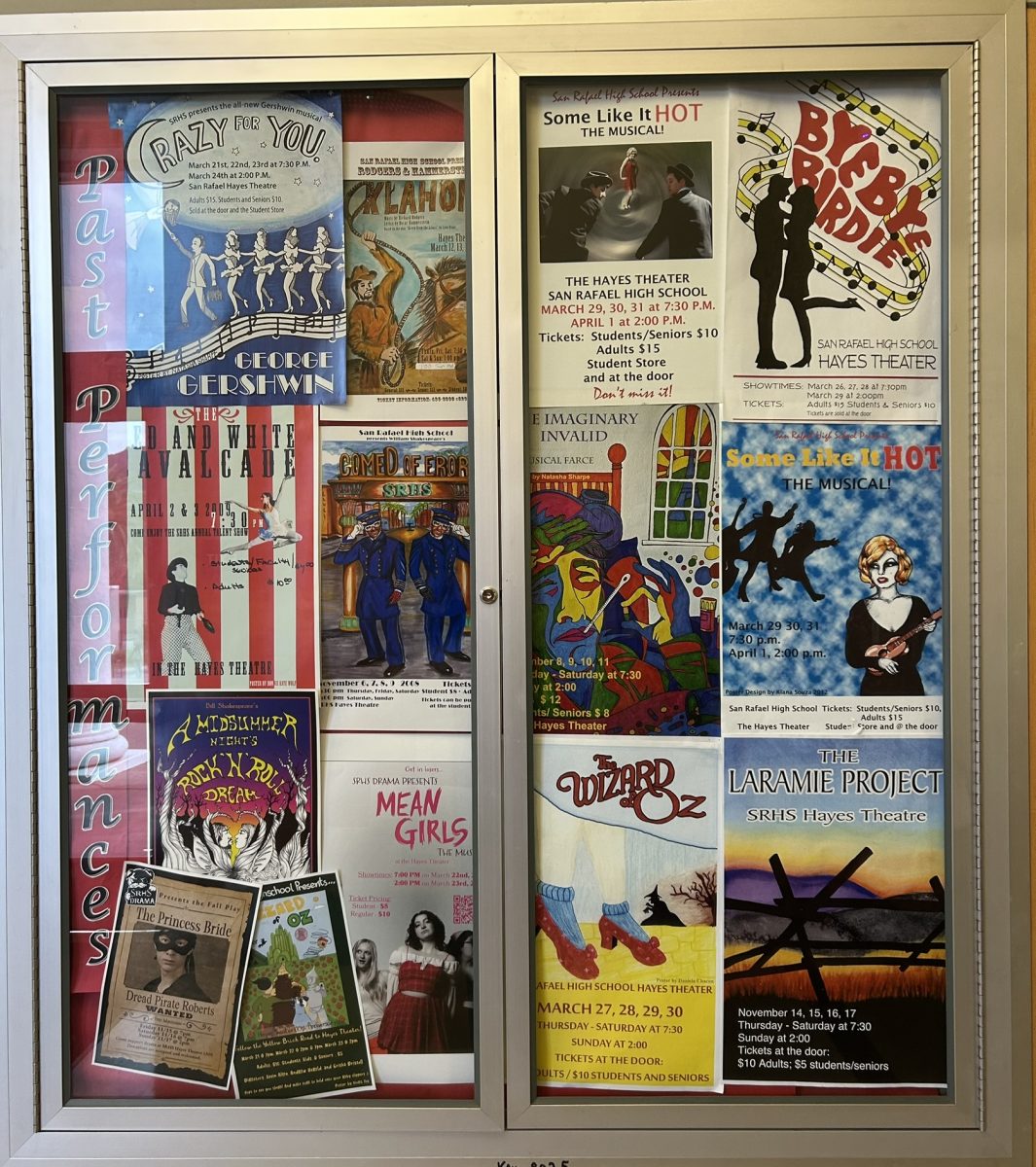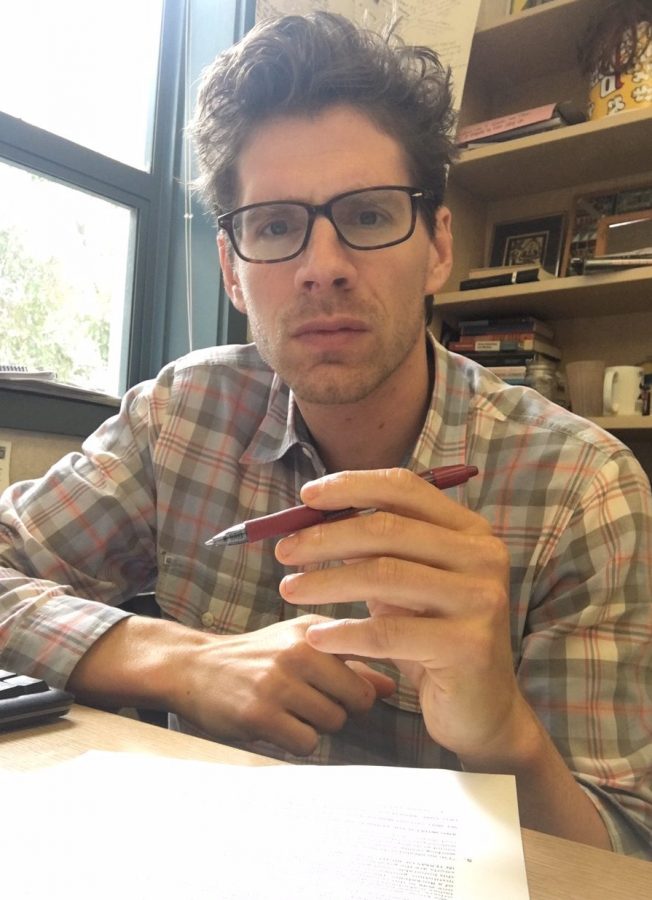On sunny fall days, students can be found doing their AP Spanish homework in the fresh air of the San Rafael High School quad. With students spread out on the grass and benches, Christina Santucci weaves around her students. But she does more than just help them with homework.
“She [would use] this time to check in with us on how we were doing, not necessarily about how we were doing in her class, but how we were doing in our personal lives. Letting us work outside was one of the many ways that she showed us that she cared about and supported us,” explains former AP Spanish student Estelle Engelskirchen.
Whether she’s helping a student or greeting her teaching neighbor, Madame Truett, in Italian, she brings a light to the otherwise dark AD building.
Christina Santucci has taught at SR since the 2022-2023 school year. She’s currently teaching Spanish Language and Literature 1, Spanish Language and Literature 2, and AP Spanish. She aims to bring structure and fun to all of these classes with engaging lesson plans, and activities that get students ready for the real Spanish-speaking world.
Santucci has traveled a lot, so this is a world with which she is very familiar. She explains that after high school she “was not really on a plan,” and did not take the traditional path. After graduation, she spent part of her 20s doing a semester of community college, taking a trip, then doing another semester.
One spring break, she was driving with her friends from California to New Orleans. They needed a break, so they spent the night in Santa Fe. They woke up and were stunned by its beauty. Instead of continuing on to their planned destination, they stayed the whole time in Santa Fe. One of her friends even refused to come home. Years later, Santucci moved there and camped in the Sangre de Cristo mountains for two months. After spending many more years in the Bay Area, where she had grown up, she moved to Santa Fe for three years.
She also lived in Brazil in the 1990s. She sold her car for $2,000 and used that money to live there for six months. Santucci explains that “nobody thought I would be able to do it.” She proved them all wrong. She started off staying in hostels, but eventually rented a room in a family’s house. She was able to be so immersed in the culture, and even became like a member of the family she was staying with. She even thought, “I wonder if I could pick up Portuguese?” Not surprisingly, she did, and still practices it.
Another time, Santucci lived in Italy for a few months after receiving a scholarship from the University of Pisa. While she was there, she made friends with people who spoke no English, and by spending her free time with them, she says that, “I was just picking it all up and then I became pretty fluent.”
She was able to experience these many different cultures of the world, and it impacted her educational decisions.
“It helped me establish that I loved languages, I loved culture and that that’s really what I wanted to do,” says Santucci. Her UC-Berkeley application essay was even about this time in her life. She states that her essay, which she entitled “The Pull,” addressed how “each experience that I would have either at school or when I traveled would help me decide what I wanted to study or where I wanted to go the following semester or six months,” says Santucci.
This eventually led her to major in Anthropology at UC-Berkeley after community college.
Additionally, throughout her 20s, she and her sister ran their family’s Italian bakery in San Francisco, Stella Pastry. Her father, a passionate baker, started it in the 1960s. Later on, he handed the ownership off to Santucci and her sister. They ran it for many years, but finally sold it to focus on individual passions.
After obtaining her bachelor’s degree, she attended Dominican University to get her teaching credential. She did her student teaching at Terra Linda High School, then got a position at Miller Creek Middle School, where she taught Spanish for almost a decade.
She teaches Spanish Language and Literature at SRHS, which is for native speakers. It’s different from teaching beginning Spanish classes at Miller Creek, because teaching Language and Literature involves discovering where students are at in their Spanish education. Often, there are people in the class who are fully fluent and can complete advanced writing assignments, and others who don’t yet know grammar basics. Sophomore Sofia Sanchez has been in her Language and Literature class since freshman year.
“I knew how to speak Spanish, but I didn’t fully understand why we said certain things, and now I know,” says Sanchez. Her way of explaining things makes sense to Sanchez and she loves how Santucci sets up the class. She also appreciates Santucci’s humor and the inside jokes she has with her class. This helps her make connections with her students.
The other class she teaches is AP Spanish. Much of the year is spent preparing for a big exam in May. Last year, out of those who took the AP Spanish exam, almost everyone passed.
“She’s brought the AP class some nice structure,” says the fellow Spanish Language and Literature teacher, Erica Smith. According to students, this is not the only way Santucci’s class is useful.
“We got to explore different aspects of culture, dialects, socio economic issues, and more in various Spanish speaking countries, so in a way it was a Spanish class, a writing class, and a history class all in one,” says Engelskirchen.
In the classwork, she includes reading, writing, listening, and lots of conversations. Students who plan to go to Spanish-speaking countries can be more equipped if they know how to have conversations, not just study textbooks. Santucci simulates this by assigning many conversation activities daily.
In AP Spanish, there is a mix of people on either side of the language spectrum. Many students have known Spanish for their whole lives, and many students have only taken a few years of high school Spanish classes. She has these people of different backgrounds interact and have conversations. This prepares people to be able to function in a Spanish-speaking country or even just have a conversation with someone who speaks it.
One day in AP Spanish, we walked in and Ms. Santucci put on the final round of an exciting game show. Once it was over, she put an image on her screen. We saw that she had recreated the game show, but her version was in Spanish. We got useful practice using descriptive words and listening skills while participating in a fun game.
She has a teenage daughter, and is able to see what it’s like to be a high schooler in Marin. She says that “being on the inside of it at home helps me to be more patient and flexible with students.”
“It made for a classroom environment where we could be challenged but also feel supported by someone who understands that life outside of school can be challenging too,” says Engelskirchen. This environment has and will affect many SR students, and like Engelskirchen, they will always ask: “Podemos ir afuera?”








































Jane Stanley • Dec 5, 2023 at 10:12 am
Great story Hannah! Good job!!
Marguerite Walden-Kaufman • Dec 5, 2023 at 9:08 am
Amazing article!!
Loved getting to learn more about Ms. Santucci, and the warm climate she fosters. So well done!
Gabriela Finell • Dec 1, 2023 at 12:52 pm
Such a fun article!! Loved learning all about Santucci´s history – she´s such an interesting person! You told her story perfectly – Go Hannah!!
John Parsons • Dec 1, 2023 at 9:44 am
I wish that I could take one of Ms. Santucci’s classes! It sounds like she’s a thoughtful and engaging teacher determined to make learning Spanish fun, useful, and meaningful. I enjoyed the profile very much.
Isabel Sonneborn • Nov 30, 2023 at 9:53 pm
¡Muy Bien Hannah! I loved hearing more Ms. Santucci’s history and loved your descriptions. You did a great job at setting the scene and giving the reader a sense of what it’s like to be in her class!
Sarah Pledger • Nov 28, 2023 at 2:04 pm
Podemos ir afuera? Love that ending